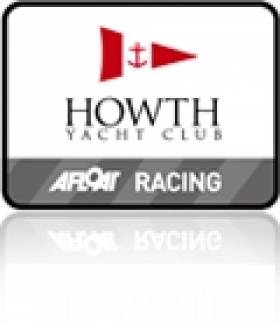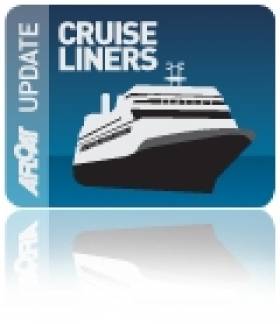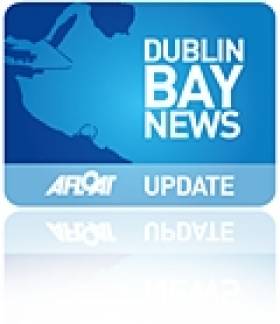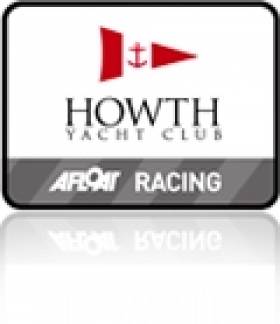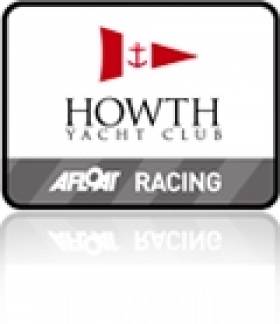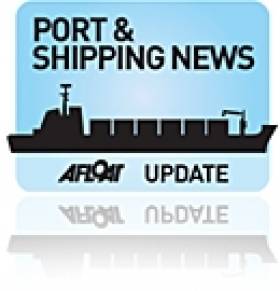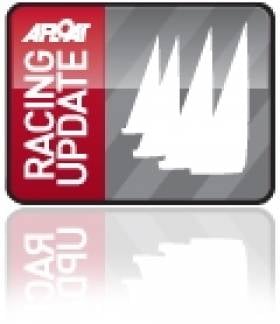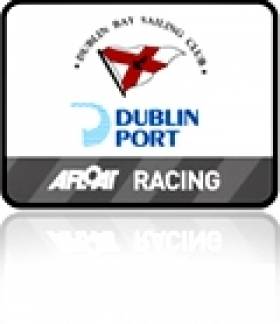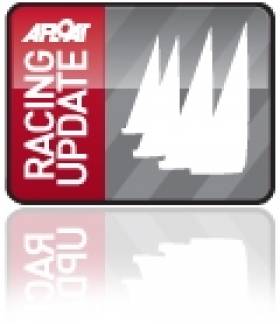Displaying items by tag: Dublin Bay
'Crazy Horse' Romps Home in IRC 1
HOWTH YACHT CLUB. WEDNESDAY SERIES 3 (RACE) 04/08/2010 Class 1 IRC: 1, Crazy Horse Reilly/Chambers; 2, Tiger Hughes/Harris; 3, Equinox R McDonald; Class 1 HPH: 1, Trinculo M Fleming; 2, Crazy Horse Reilly/Chambers; 3, Tiger Hughes/Harris; Class 2 IRC: 1, Indigo Eadie/Ritchie; 2, Dux A Gore-Grimes; 3, Toughnut D Skehan; Class 2 HPH: 1, Indigo Eadie/Ritchie; 2, Toughnut D Skehan; 3, Sunburn I Byrne; Class 3 IRC: 1, Alliance V Gaffney; 2, Starlet Bourke/Others; 3, Gecko K Darmody; Class 3 HPH: 1, Rossinver C Scott; 2, Helly Hunter L McMurtry; 3, Drumbeat F & F Magann; White Sails HPH: 1, Sandpiper of Howth A Knowles; 2, Fanatix R Fanning; 3, Brazen Hussey Barry/Stirling; White Sails IRC: 1, Fanatix R Fanning; 2, Voyager J Carton; 3, Force Five R & J McAllister
'The World' Arrives into Dublin Bay
After an afternoon arrival in Dublin Port (today) on 4th August, The World, the first ocean-going luxury resort vessel is to stay in the capital for a four-day stay, writes Jehan Ashmore.
The World is not a conventional cruiseship, but is a unique concept inthat passengers can have the ultimate lifestyle experience of stayingonboard as residents, living in their own ultra-luxury privatepenthouse suites.
There are 165 private residences onboard the eight-year vessel. Theluxurious two and three bedroom residences are fully-furnished,complete with a living and diningroom area, kitchen, bathroom andverandah. The average occupancy of residents and guest at any onetime, varies between 150-200 people.
As of 2006, all the residential 'homes' were sold. Like any privatecommunity, there are opportunities to purchase apartments that areavailable for re-sale. Guests can also take a holiday by renting aresidence from a selection of units.
Facilities include several small restaurants, a theatre, library,delicatessen. Leisure activities feature a health spa and two swimmingpools and a stern-mounted retractable marina-deck. On the top-deckthere is a full-sized tennis court, a putting green with authenticgrass and driving range. Should the golf balls career off deck andplonk in the ocean, the balls are bio-degradable and dissolve within96 hours.
The 43,524gt vessel had arrived overnight from Cardiff and is dockedclose to the East-Link toll bridge. Passing motorists and pedestriansalike will have an opportunity to see The World until this Saturday (7August).
Notably the nearby attraction of the new Dublin Wheel, at the PointVillage provides an excellent venue to take views of The World andDublin's Fair City. The floating residency departs Dublin early onSunday morning to dock at Cobh the next day for three-days (9-11August).
The Norwegian built vessel, completed by Fosen Mek, Rissa in 2002,made a first visit to Dublin in that same year. It was during thoseheady boom-years, that the largest penthouse suite covering over3,220sq ft cost US$ 6.8m.
The ethos of living onboard while seeing the World on a continouscruising mode, was the concept of The World's founder, Knut Klosterjunior. Kloster established ResidenSea which originally intended toorder a 85,000 gross tonnes vessel but this was radically scaled downdue to customer demand.
In September, The World sails to Greenland for a ten day expedition.After that the vessel heads onto North America with Christmas 2010devoted to exploring Antartica.
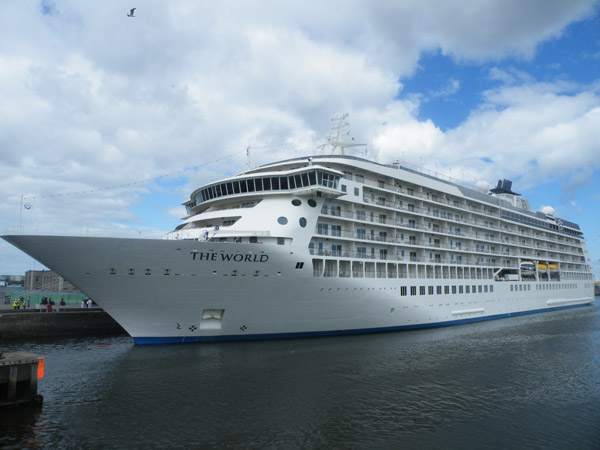
The World moored alongside North Wall Quay Extension, Dublin. Photo Jehan Ashmore/ShipSNAPS
Wing Sail Craft Pays a Visit to Dun Laoghaire
It was plane sailing when Larinka berthed at the town marina in Dun Laoghaire this afternoon. The unusual sight of a winged sail jutting above the breakwater made her an obvious target for boating folk. The interesting vessel is the last of four Zephyr 43 Walker Wingsail tris designed by John Walker and built in the Royal Naval Dockyard in Davenport Plymouth. Built in 1991 the boat has a cruising speed of eight knots and a top speed of 14. Photo from Dun Laoghaire today and a youtube video below:
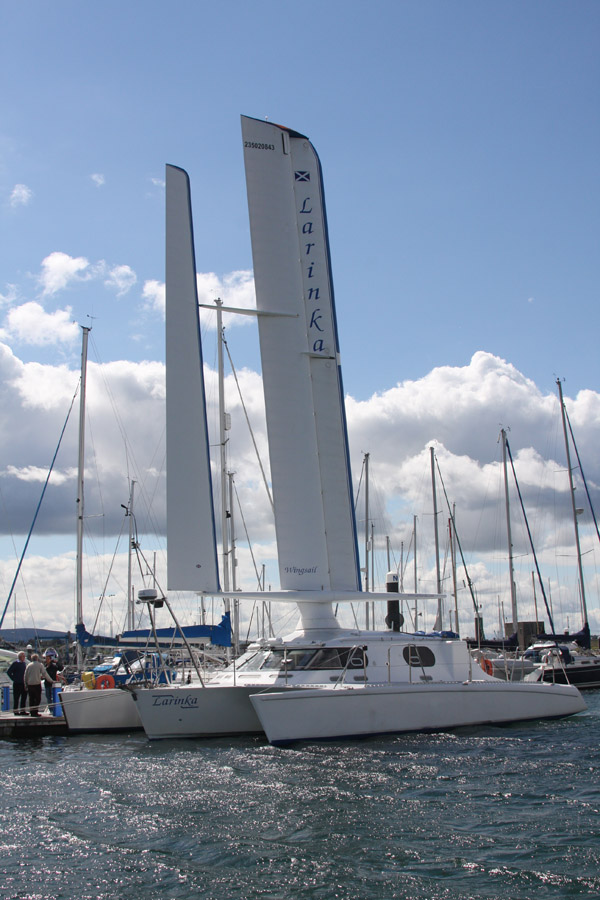
Plane Sailing: Larinka is berthed in Dun Laoghaire marina
America's Cup Legend Lines up for Howth Etchells Regatta
America's Cup legend John Bertrand is among 42 entries received for the Etchells World Championships coming to Howth Yacht Club later this month. A quarter of the fleet are Irish but entries are also coming from Australia, Bermuda, USA and Sweden. Bertrand and his crew are coming from Victoria in Australia. Bertrand skippered Australia II to victory in the 1983 America's Cup, ending 132 years of American supremacy. Bertrand won the bronze medal in the Finn competition at the 1976 Summer Olympics in Montreal. He is a member of Royal Brighton Yacht Club in Melbourne Australia, and currently competes in the Etchells class boats. The Howth entry list as at July 30th can be downloaded below.
Rita Beats Oona in HYC Seventeen's Race
HOWTH YACHT CLUB. TUE + SAT SERIES 3 (RACE) 03/08/2010 17 Footer SCRATCH: 1, Rita Lynch/Curley; 2, Aura I Malcolm; 3, Oona P Courtney; 17 Footer HCAP: 1, Aura I Malcolm; 2, Pauline O'Doherty/Ryan; 3, Rita Lynch/Curley TUESDAY SERIES 3 (RACE) 03/08/2010 Puppeteer SCRATCH: 1, Mojo Stanley/Callen; 2, Ibis G May; 3, Pinocchio Swan/Davidson; Puppeteer HPH: 1, Mr. Punch NiBhraonain/Wilson; 2, Pinocchio Swan/Davidson; 3, No Strings T Harvey; Squib SCRATCH: 1, Chatterbox J Kay; 2, Shadowfax P Merry; 3, Arctic Fox G Barry; Squib HPH: 1, Chatterbox J Kay; 2, Shadowfax P Merry; 3, Arctic Fox G Barry; Etchells SCRATCH: 1, Kootamundra Wattle O'Grady/Reilly; 2, Jabberwocky S Knowles; 3, Northside Dragon J Bourke; SB3 SCRATCH: 1, Sharkbait Duncan/Moran; 2, Sin a Bhuifl Guinness/Costigan; 3, Investwise D Quinn
Pterodactyl Wins DBSC Glen Race
DUBLIN PORT Dublin Bay Sailing Club Results for 3 AUGUST 2010
CRUISERS 2 - 1. Cor Baby (Keith Kiernan et al), 2. Red Rhum (J Nicholson), 3. Borraine (Ean Pugh)
CRUISERS 3 - 1. Papytoo (M.Walsh/F.Guilfoyle), 2. Rattler 2 (Austin Whelan), 3. Grasshopper 2 (K & J Glynn)
CRUISERS 4 - 1. Aslana (J.Martin/B.Mulkeen), 2. Maranda (Myles Kelly), 3. Artemis (J.Giles)
GLEN - 1. Pterodactyl (R & D McCaffrey), 2. Glenshesk (L.Faulkner et al)
RUFFIAN 23 - 1. Shillelagh (J.Caldwell/D.Barber), 2. Diane ll (Bruce Carswell), 3. The Sting (Richard O'Keefe et al)
SIGMA 33 - 1. White Mischief (Timothy Goodbody), 2. Pippa lV (G.Kinsman/K.Blake/M.O'Brien), 3. Pastiche (John Peart et al)
Italians Bring Home Irish Military Equipment from Africa
On Monday 26 July, the Grande Senegal, a brand new vessel that was only launched this year for Italian shipping giant, Grimaldi Lines, docked in Dublin after a 9,600km voyage from Douala, Cameroon, along Africa's mid-western coast.
Onboard was a large-scale consignment of Irish Defence Forces military equipment from Chad, writes Jehan Ashmore.
The charter of the 47,218 gross tonnes marked the final phase in the withdrawel since April of Irish Defence Forces from UN-peacekeeping duties in the troubled land-locked central African state. The Irish-based troops had already flown home in advance of the military hardware.
In total, 3,000 tonnes of equipment was shipped which included 208 TEU (20-foot long containers) 75 trucks, 4x4s, armoured vehicles and an assortment of trailers and fuel bowsers.
The cargo was first moved from Defence Force facilities based at Goz Beida, in eastern Chad, across 900km of desert to the Chadian capital, N'Djamena. From there the equipment was divided with sensitive cargo flown to the port of Douala. The remaining cargo was taken on another 900km road-trip to Ngaoundere, in northern Cameroon. Upon arrival at Ngaoundere, the cargo was transferred by rail for 650km to Douala, finally completing the journey to the African port.
The transportation was undertaken during the impending threat of the rainy season which can pose serious difficulties for all modes of
wheeled transport to the extent that renders progress to be difficult if not impossible. The major logisticical exercise was one of the most
challenging operations experienced by the Defence Forces.
With the equipment loaded at Douala, Grande Senegal set sail on 13 July bound for Dublin. The long-distance passage took a fortnight to arrive at Dublin, where the ConRo (Containers and Roll-On Roll-Off) vessel discharged vehicles through the stern-mounted door ramp.
Once the equipment was disembarked at the quayside, the Gardai and Defence Forces provided joint escorts to the vehicle-conveys, to ensure a speedy exit out of the port, destined for military barracks. Grande Senegal is one of seven Grande 'Angola' class newbuilds built at the Uljanik Shipyard, Pula, Croatia. Each 210 metre-long ConRo vessel can combine a load of 2000 vehicles and 800 TEU, or alternatively a maximum of 1,360 TEU. The Grande Senegal departed Dublin the next day for Amsterdam.
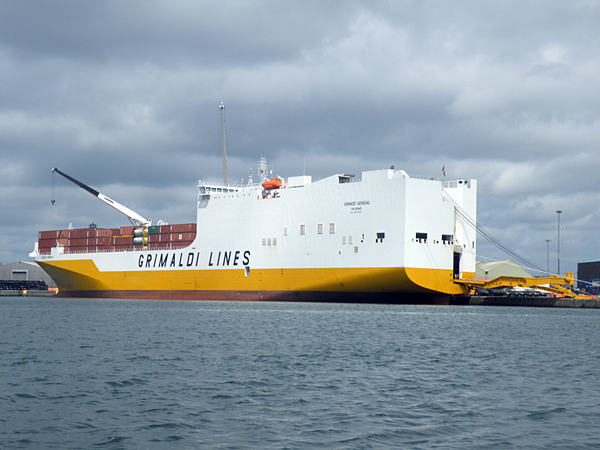
Murphy Wins Radial 'Connaughts' on Dublin Bay
A strong entry of 112 including Chile's Matias Del Solar, currently ranked seventh in the world, competed for the Connaught Laser championships this weekend on Dublin Bay. Hosted by the National YC under international race officer Con Murphy, the three Saturday races were sailed in a 10-15kt shifty westerly. Sunday saw alight breeze swing from NW to SW and then back around to North andeventually an Easterly, resulting in several postponments andultimately 2 of the planned 3 races being sailed. The Radial fleet hadthe largest fleet of 48 boats and was won Annalise Murphy from thehost club with Christopher Eames from Strangford in second. Thestandard fleet was duly won by Matias Del Solar from James Espey ofBallyholme and the 4.7s were won by Howth's Diana Kissane from fellowclub sailor Cillian Mc Creer. A number of the competitors includingDel Solar, Espey and Murphy are now enroute to Weymouth for next weeks Olympic Sail for Gold regatta where similar conditions to Dublin Baycan be expected.Full results attached:-
A strong entry of 112 including Chile's Matias Del Solar, currently ranked 7th in the world, competed for the Connaught Laser championships over the August holiday weekend on Dublin Bay.
Hosted by the National YC under international race officer Con Murphy, the 3 saturday races were sailed in a 10-15kt shifty westerly. Sunday saw a light breeze swing from NW to SW and then back around to North and eventually an Easterly, resulting in several postponments and ultimately 2 of the planned 3 races being sailed.
The Radial fleet had the largest fleet of 48 boats and was won Annalise Murphy from the host club with Christopher Eames from Strangford in second. The standard fleet was duly won by Matias Del Solar from James Espey of Ballyholme and the 4.7s were won by Howth's Diana Kissane from fellow club sailor Cillian Mc Creer.
A number of the competitors including Del Solar, Espey and Murphy are now enroute to Weymouth for next weeks Olympic Sail for Gold regatta where similar conditions to Dublin Bay can be expected.
Philip O'Dwyer's Arwen is DBSC White Sail Winner
DUBLIN PORT Dublin Bay Sailing Club Results for 31 JULY 2010 BENETEAU 31.7 - 1. Levante (B.Leyden/M.Leahy), 2. Magic (D.O'Sullivan/D.Espey), 3. Violet Flame (B.Murphy/L.Osbourne) BENETEAU 31.7 ˆ ECHO 1. Violet Flame (B.Murphy/L.Osbourne), 2. Kernach (Eoin O'Driscoll), 3. Levante (B.Leyden/M.Leahy) CRUISERS 0 - ECHO 1. Lively Lady (Derek Martin), 2. WOW (George Sisk), 3. Tsunami (Vincent Farrell) CRUISERS 0 - 1. WOW (George Sisk), 2. Lively Lady (Derek Martin), 3. Tsunami (Vincent Farrell) CRUISERS 1 - ECHO 1. Jump The Gun (M.Monaghan/J.Kelly), 2. Something Else (J.Hall et al), 3. Indecision (Declan Hayes et al) CRUISERS 1 - 1. Something Else (J.Hall et al), 2. Aztec 3 (Peter Beamish), 3. Gringo (Tony Fox) CRUISERS 2 - ECHO 1. Peridot (Jim McCann et al), 2. Bendemeer (Gerald Kinsella), 3. Jawesome 11 (V.Kennedy/M.Dyke) CRUISERS 2 - 1. Peridot (Jim McCann et al), 2. Jawesome 11 (V.Kennedy/M.Dyke), 3. Bendemeer (Gerald Kinsella) CRUISERS 3 - ECHO 1. Gung Ho (G & S O'Shea), 2. Saki (Paget McCormack et al), 3. Papytoo (M.Walsh/F.Guilfoyle) CRUISERS 3 - 1. Gung Ho (G & S O'Shea), 2. Supernova (K.Lawless et al), 3. Hard on Port (Flor O'Driscoll) FLYING FIFTEEN - 1. Gekko (S & P Nolan), 2. Snow White (Frank Burgess), 3. Kooigjug (K Dumpleton) GLEN - 1. Glenluce (D & R O'Connor), 2. Glenshesk (L.Faulkner et al), 3. Glencorel (B.Waldock/K.Malcolm) RUFFIAN 23 - 1. Diane ll (Bruce Carswell), 2. Ruff Rider (Ronan Lee), 3. Ripples (Frank Bradley) SHIPMAN - 1. Euphanzel lll (Louis McSherry et al), 2. Whiterock (Henry Robinson), 3. Macro One (Joseph Murray) SIGMA 33 - 1. Gwili Two (D.Clarke/P.Maguire), 2. Elandra (R.Hance et al), 3. Popje (Ted McCourt) WHITE SAIL CRUISERS - ECHO 1. Arwen (Philip O'Dwyer), 2. Calypso (Howard Knott), 3. Windshift (R O'Flynn et al) WHITE SAIL CRUISERS - 1. Arwen (Philip O'Dwyer), 2. Windshift (R O'Flynn et al), 3. Calypso (Howard Knott)
Goodbody Finishes Second at OK Europeans
The final round brought sunny skies and high temperatures, but more of the same shifty, tricky winds that have plagued the week. Bartosz Rakocy (POL) took the title with a fifth place in race nine, while Tim Goodbody (IRL) took second and Jorgen Lindardtsen (DEN) took third.


























